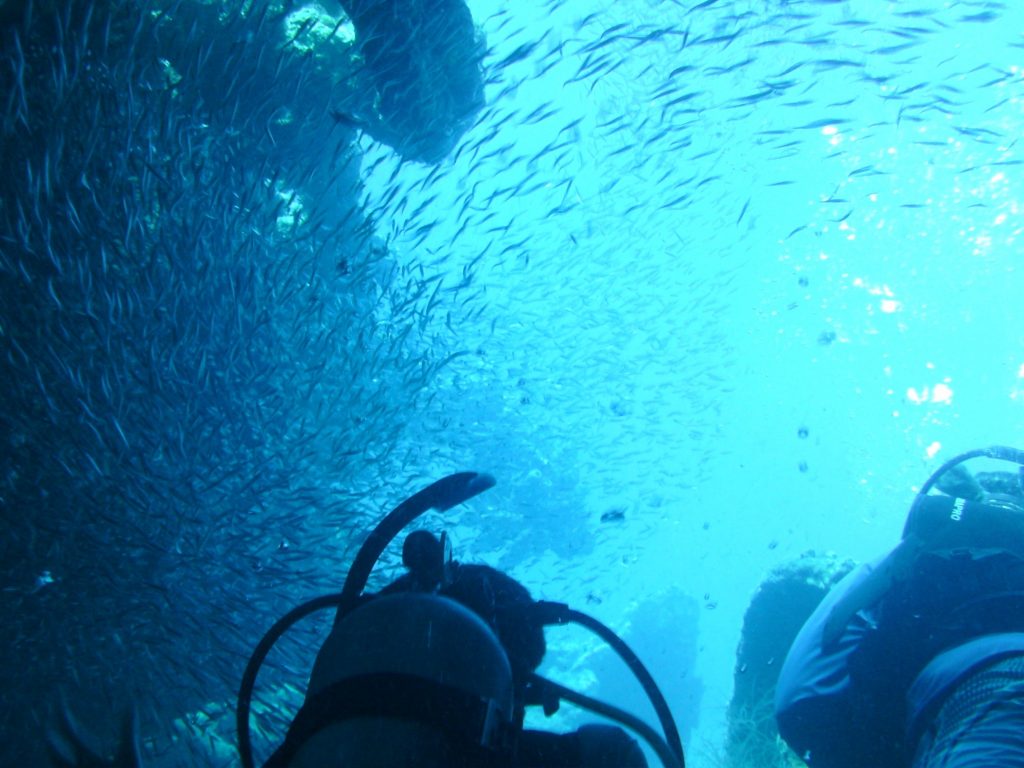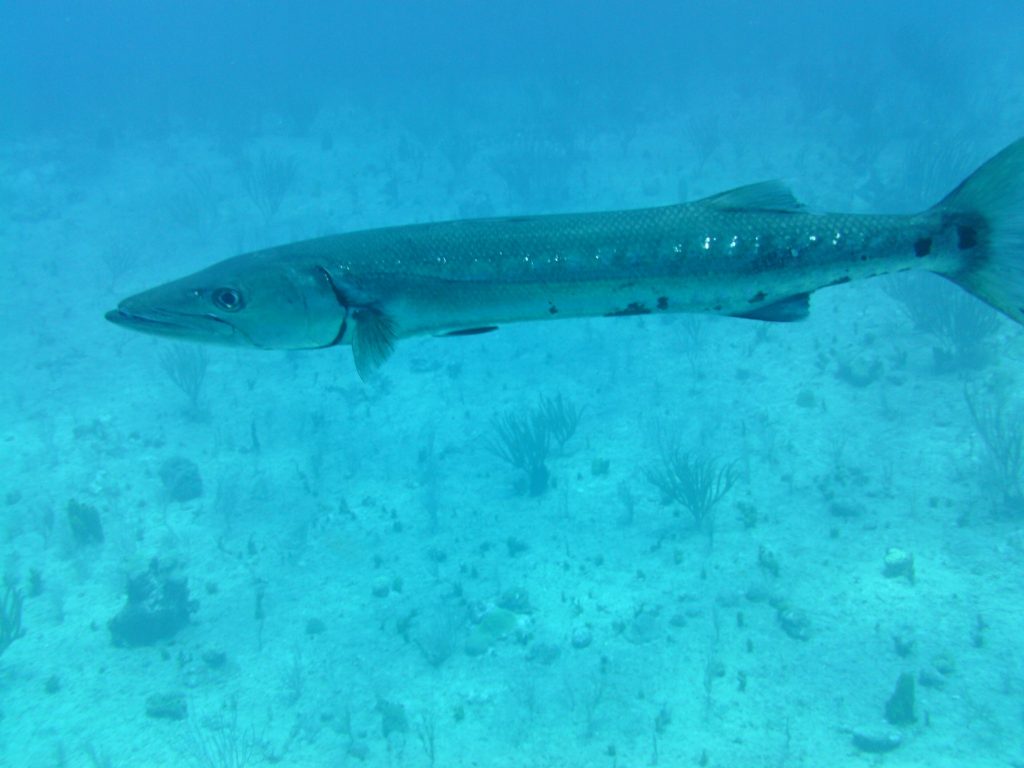As the last day after the bulk of our work, today was scheduled as a recreational period. We began the day with breakfast at Lime Tree’s cabin, I had two miniature boxes of Frosted Mini-Wheats in the midst of a large buffet to limit the possibility of seasickness. Sea Dragon exited the harbor first following a short gear check, our destination being a small bay off of Salt Island holding one of the most famous shipwrecks in the Caribbean, the RMS Rhone. Due to excessive current and traffic we moved to Wreck Alley, a group of four intentionally wrecked ships, for our first dive. The ecological benefit of shipwrecks is the potential for creating a new ecosystem while drawbacks include the possibility of crushing coral during an uncontrolled sinking, endangering future divers with rusted metals, or releasing toxins into the water over time. Wreck Alley exists at the drop off point of a natural reef, the sea floor going from thirty feet in depth to seventy. Inside one of the ships was a flurry of minnows, casually spiraling in a group of hundreds within the galley of the algae coated vessel. Recognizing the presence of divers, a large dog snapper followed our group with the expectation that we were hunting for lion fish, a venomous and invasive marine animal that has an open season all year due to its threat to humans and ecosystems. Because of the depth in unison with the bottom time, we had a surface interval of nearly an hour before attempting to dive on the Rhone, a perfect time for the history of the ship to be explained. Comparable to the Titanic, the ship was the first to be declared “unsinkable,” before encountering a hurricane in the BVI two years after production, killing the captain, all but one passenger, and bringing the ship to the sea floor. The main concern of our dive was the current and maintaining groups, which are both easier after descending below the harsher waves. One of the first things we did upon reaching the Rhone was navigate to the bow and swim through a hole in the side of the three-hundred-foot mail ship. In the hole was a gargantuan lobster as well as a swirling school of small bait fish. Past the swim through we encountered a plain of sea grass and intermittent coral. On this plain were two animals not often encountered due to both rarity and camouflage; a seahorse with its tail curled around a tree of soft coral and peacock flounder concealed on the ocean bottom. Next we came across the plaque marking the site as a national marker before encountering a barracuda that measured approximately four feet in length, a very curious barracuda. After that lovely sighting we began a three minute safety stop at fifteen feet and exited the water. Lunch occurred on Cooper Island, I was served the conch (“konk”) fritters, a fried ball of chopped mussels with a consistency similar to that of calamari. During our thirty minutes of free time I bought Oreo gelato from the coffee shop on the small resort island. Our last recreational activity of the day was a snorkel over a plain of sea grass in search of turtles. Although I personally saw none, several stingrays were present in the area. Following the trip back to harbor and unpacking the boat brings us to our present condition, expecting dinner at 6:30 and a night snorkel soon after.






